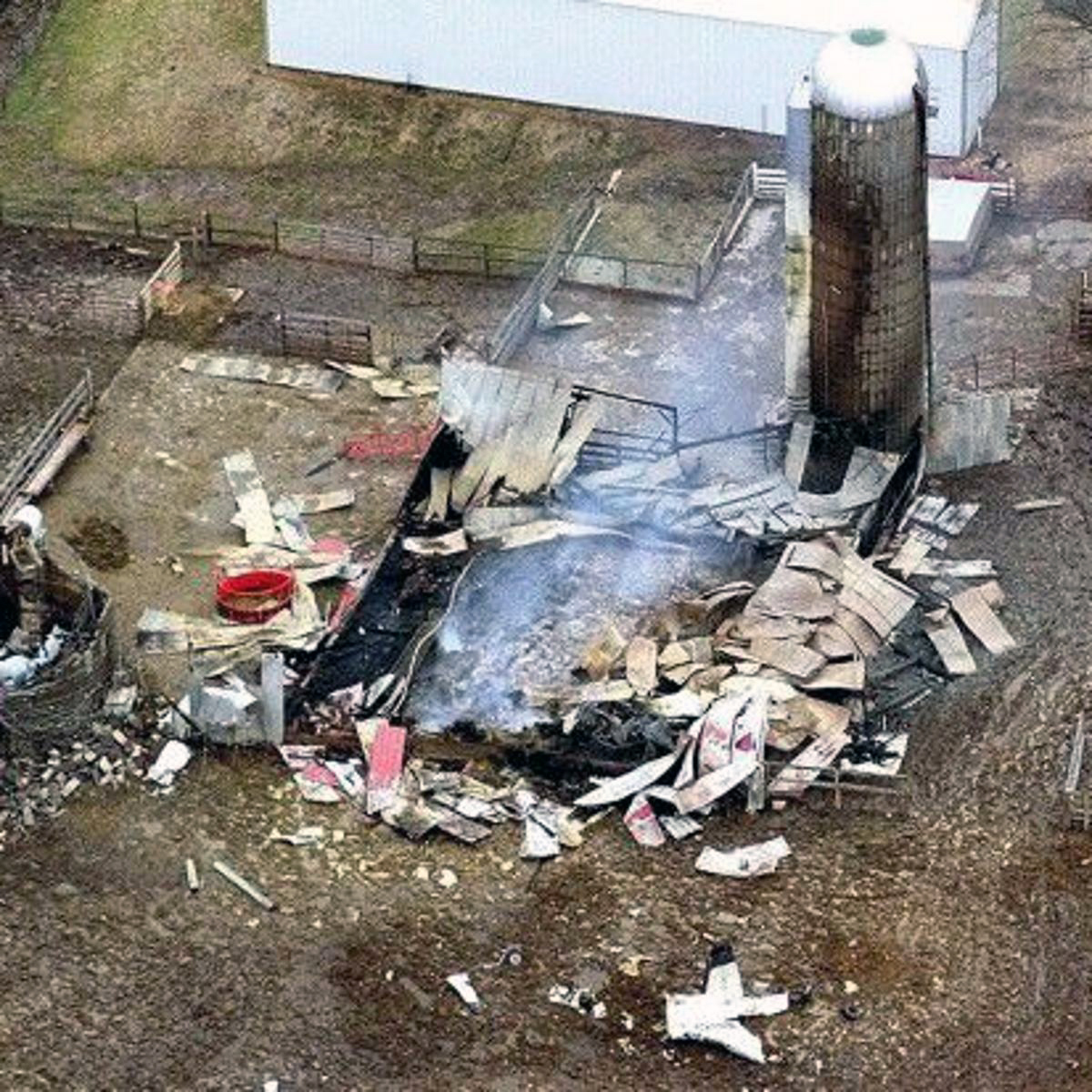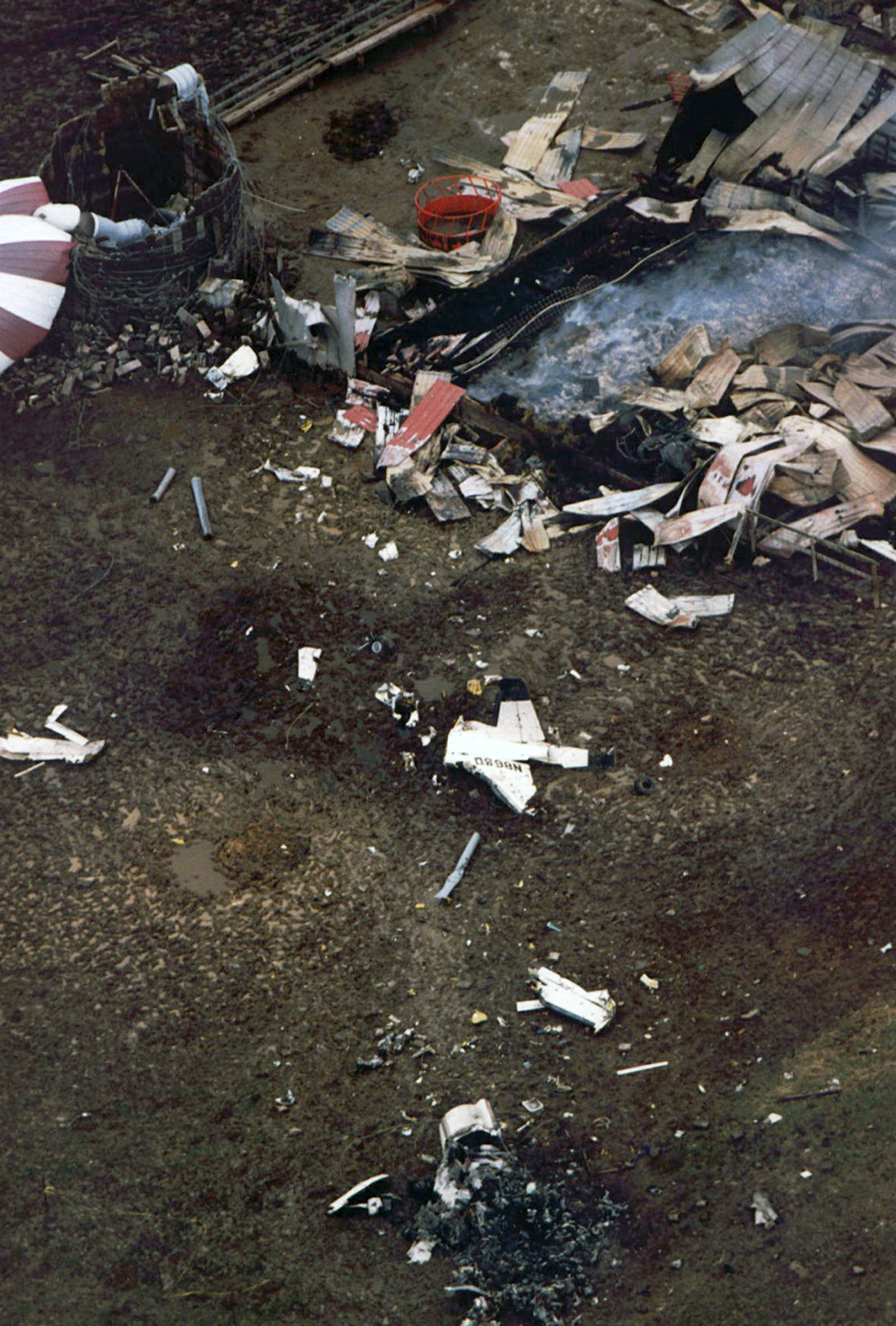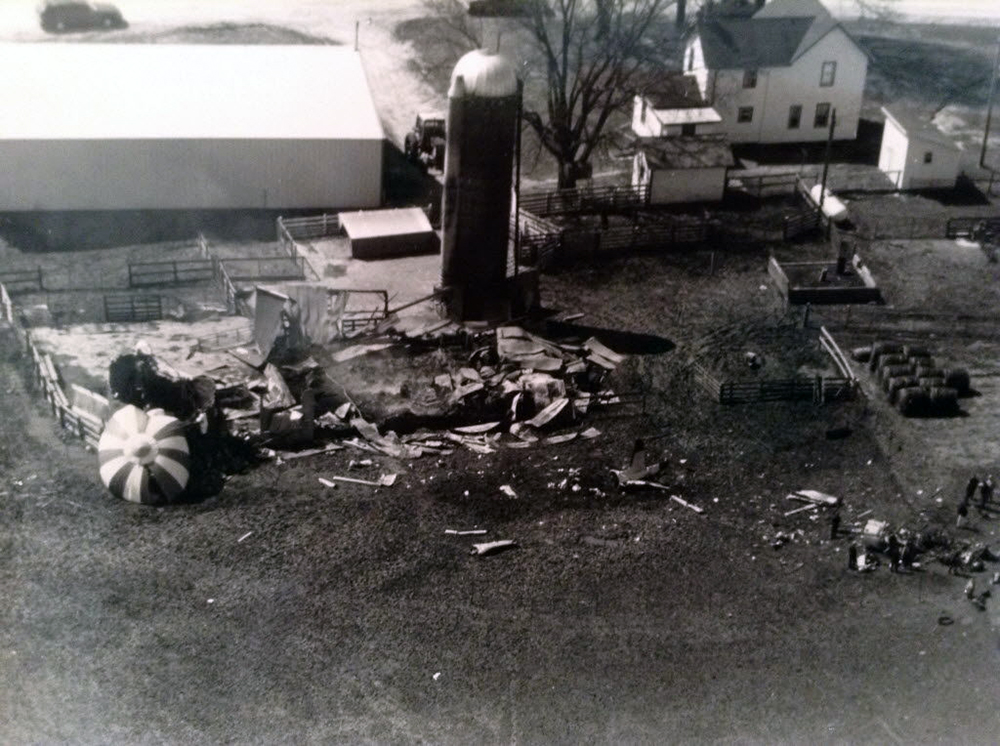Crash of a Mitsubishi MU-2B-60 Marquise in Zwingle: 8 killed
Date & Time:
Apr 19, 1993 at 1552 LT
Registration:
N86SD
Survivors:
No
Schedule:
Cincinnati - Pierre
MSN:
765
YOM:
1970
Crew on board:
2
Crew fatalities:
Pax on board:
6
Pax fatalities:
Other fatalities:
Total fatalities:
8
Captain / Total hours on type:
1922.00
Aircraft flight hours:
4580
Circumstances:
While cruising at FL240, a propeller (prop) hub arm on the left prop failed, releasing the prop blade, which struck a 2nd blade, breaking off its tip. This resulted in a severe engine vibration and shutdown of the left engine. The left engine was forced downward and inboard on its mounts. The cabin depressurized, possibly from blade contact. The flight crew made an emergency descent and received a vector to divert for an ILS approach to Dubuque. The airplane was incapable of maintaining altitude and descended in instrument conditions. Subsequently, it collided with a silo and crashed about 8 miles south of Dubuque. An investigation revealed the left prop hub failed from fatigue that initiated from multiple initiation sites on the inside diameter surface of the hole for the pilot tube. There was evidence that the fatigue properties of the hub were reduced by a combination of factors, including machining marks or scratches, mixed microstructure, corrosion, decarburization, and residual stresses. All eight occupants were killed, among them George Mickelson, 52, Governor of South Dakota.
Probable cause:
The fatigue cracking and fracture of the propeller hub arm. The resultant separation of the hub arm and the propeller blade damaged the engine, nacelle, wing, and fuselage, thereby causing significant degradation to aircraft performance and control that made a successful landing problematic. The cause of the propeller hub arm fracture was a reduction in the fatigue strength of the material because of manufacturing and time-related factors (decarburization, residual stress, corrosion, mixed microstructure, and machining/scoring marks) that reduced the fatigue resistance of the material, probably combined with exposure to higher-than-normal cyclic loads during operation of the propeller at a critical vibration frequency (reactionless mode), which was not appropriately considered during the airplane/propeller certification process.
Final Report:






